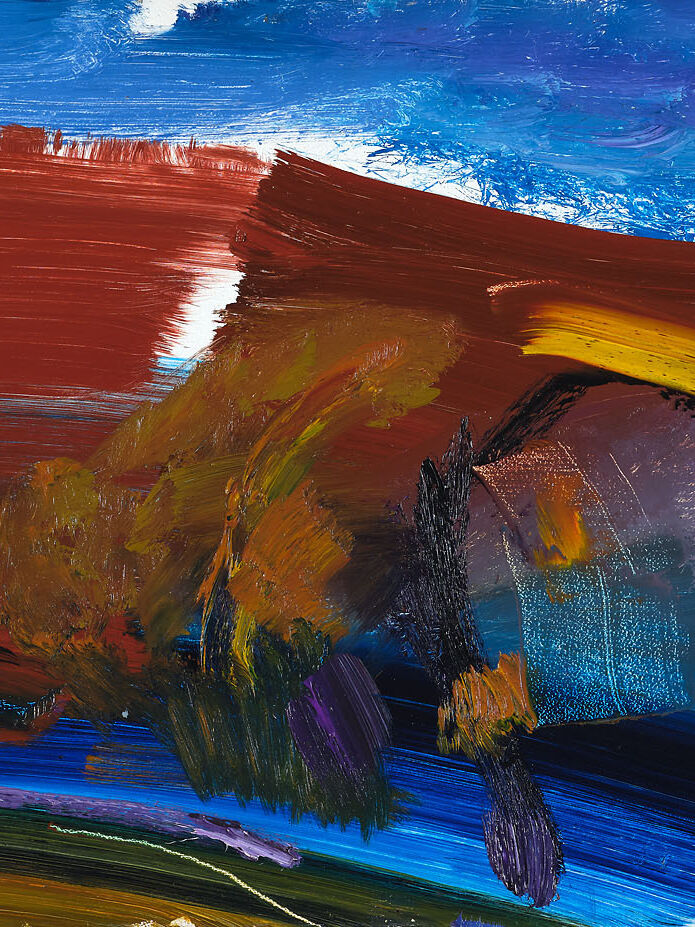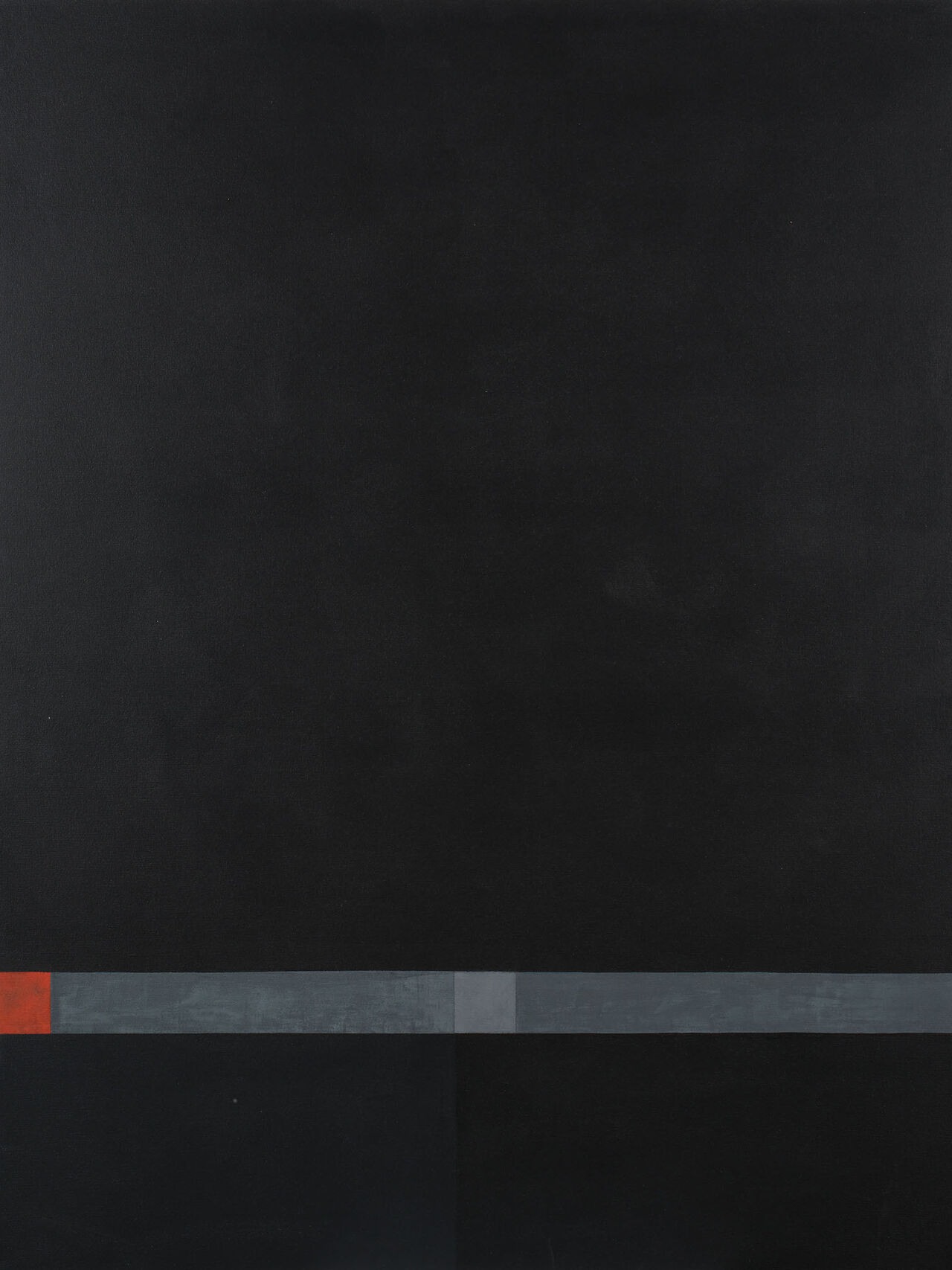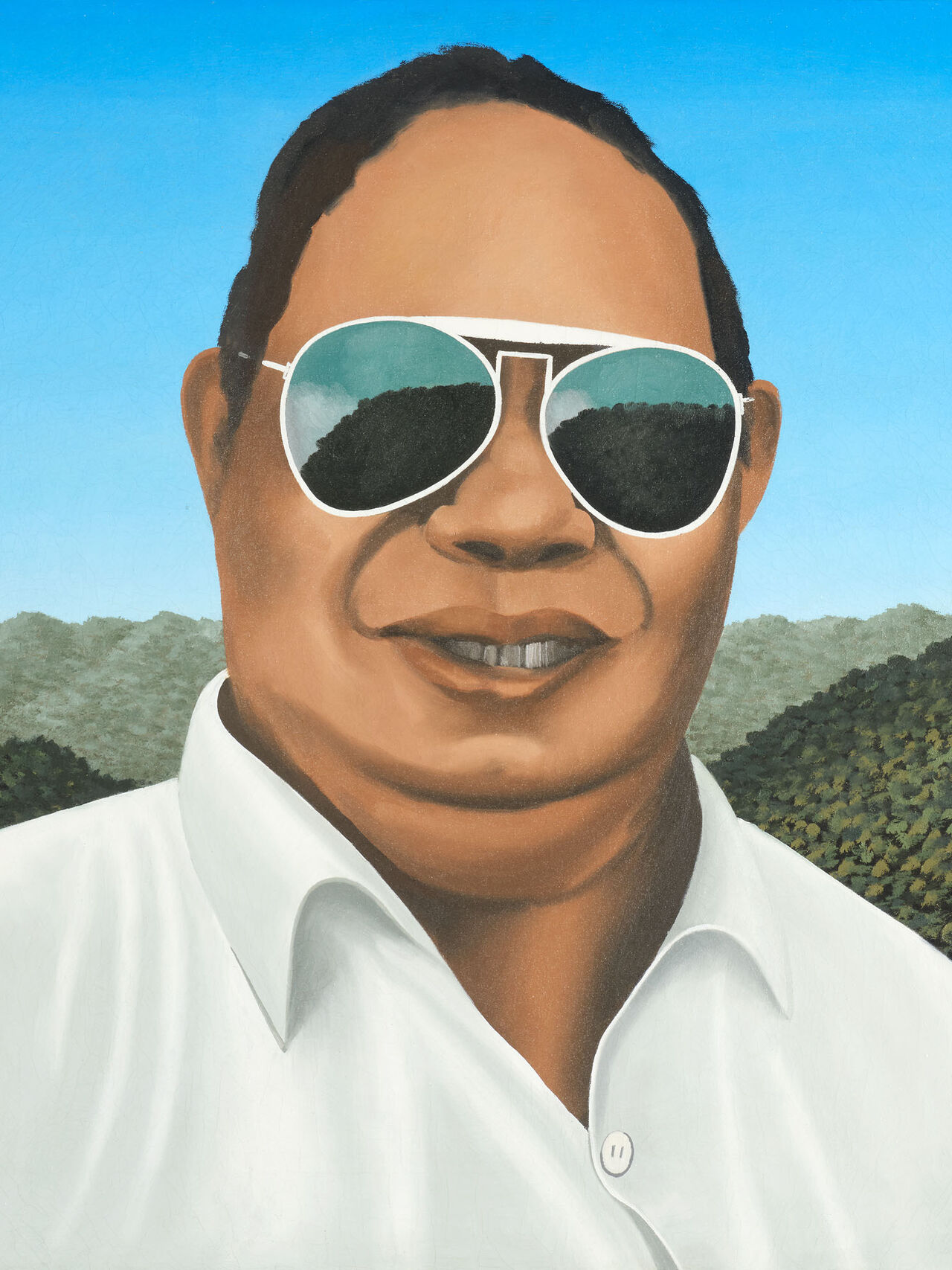Ralph Hotere 'Festival in Avignon'
Linda Tyler
Essays
Posted on 5 August 2025
Writing for the catalogue of the Te Papa exhibition Black Light in 2000, poet and former French teacher Cilla McQueen remembers the halcyon time when she and Ralph Hotere rented a cottage in the south of France:
...Avignon 1978. You and I and Andrea are living in ‘Ma Villa’, a white roughcast cottage with an orange tiled roof on the Ile de la Barthelasse, a low-lying island in the middle of the Rhône…The surroundings, the sun, deep shadows and wind all affect our senses and seep into our drawing, writing, painting. The sun dries the paint, the rain spatters it, the mistral blows debris onto it or uplifts the whole setup and overturns it on the dry grass. The canvas accepts accidents, absorbs and throws back the hot white sun. These accidents, this glare, are a language.
Hotere’s painting also uses the French language with black letters stencilled on it proclaiming “Festival Palais” then the letters are reversed into white on a black background for the “des Papes”. The name of the town is hand painted with a thick I in the middle of “Avignon”. Appropriately, it appears like a banner to be carried, or a poster for an event.
In its multi-patterned surface you can sense how the painter has been harassed by that persistent wind, burnt by the hot summer sun, and stood on browning grass to paint it. Diary entries which Cilla McQueen published in the journal Islands after their return to Dunedin describe how “it was like being in a storm of glitter. The sunlight filtering down through the vine above us made points of yellow light which jumped and danced wildly as the wind shook the leaves about.” Hotere himself wrote to Barry Brickell about relishing the “beautiful fierce light through the leaves onto the canvas” for the three months of their time in Avignon.
While they were there, at the beginning of August 1978, Pope Paul VI died in Rome, occasioning Hotere’s Le Pape est Mort series of paintings. Superimposed over the glittering white paint drips Hotere has painted a Chi-Ro or “XPI” symbol, a monogram formed from the first three letters of the word “Christos” in Greek (XPIΣTOΣ). It looms like a homage to Hotere’s favourite contemporary Spanish painter, Antoni Tàpies (1923–2012), who frequently used the cross as a motif in his work. But having been raised as a Catholic (Hotere was named Hone Papita after Jean-Baptiste Pompallier, the first Roman Catholic Bishop of New Zealand) the artist may also have been invoking the vision which the first Christian Roman Emperor Constantine had of the Chi-Rho. It appeared to him before the Battle of Milvian Bridge in 312 AD, accompanied by the words “in hoc signo vinces” (in this sign, you will conquer).
The longest running event of its kind, the annual arts festival in Avignon, founded by actor and theatre director Jean Vilar, is still held every summer in July in the courtyard of the Palais des Papes (the Palace of the Popes, home of the papacy in the fourteenth century). Hotere clearly revelled in the explosion of culture as he did in the wonderful sights, sounds and smells of Avignon itself. ‘Ma Villa’ had a prime view of the arches and castellations of the Palais, a medieval Gothic structure, and of the fireworks exploding on Bastille Day, 14th July, over the old bridge and river.
On its verso side, this painting is inscribed to the Dunedin writer O.E. (Ted) Middleton (1925–2010). Hotere made drawings and a cover design for Middleton’s fifth book, The Loners which was published by Square and Circle Press in Wellington in 1972, and also did a cover design for his seventh book, Confessions of an Ocelot and Not for a Seagull published by John McIndoe in Dunedin in 1979. Middleton went blind in middle age, and his work has been described as “sensuous” and “rich in tactile and aural detail”.



